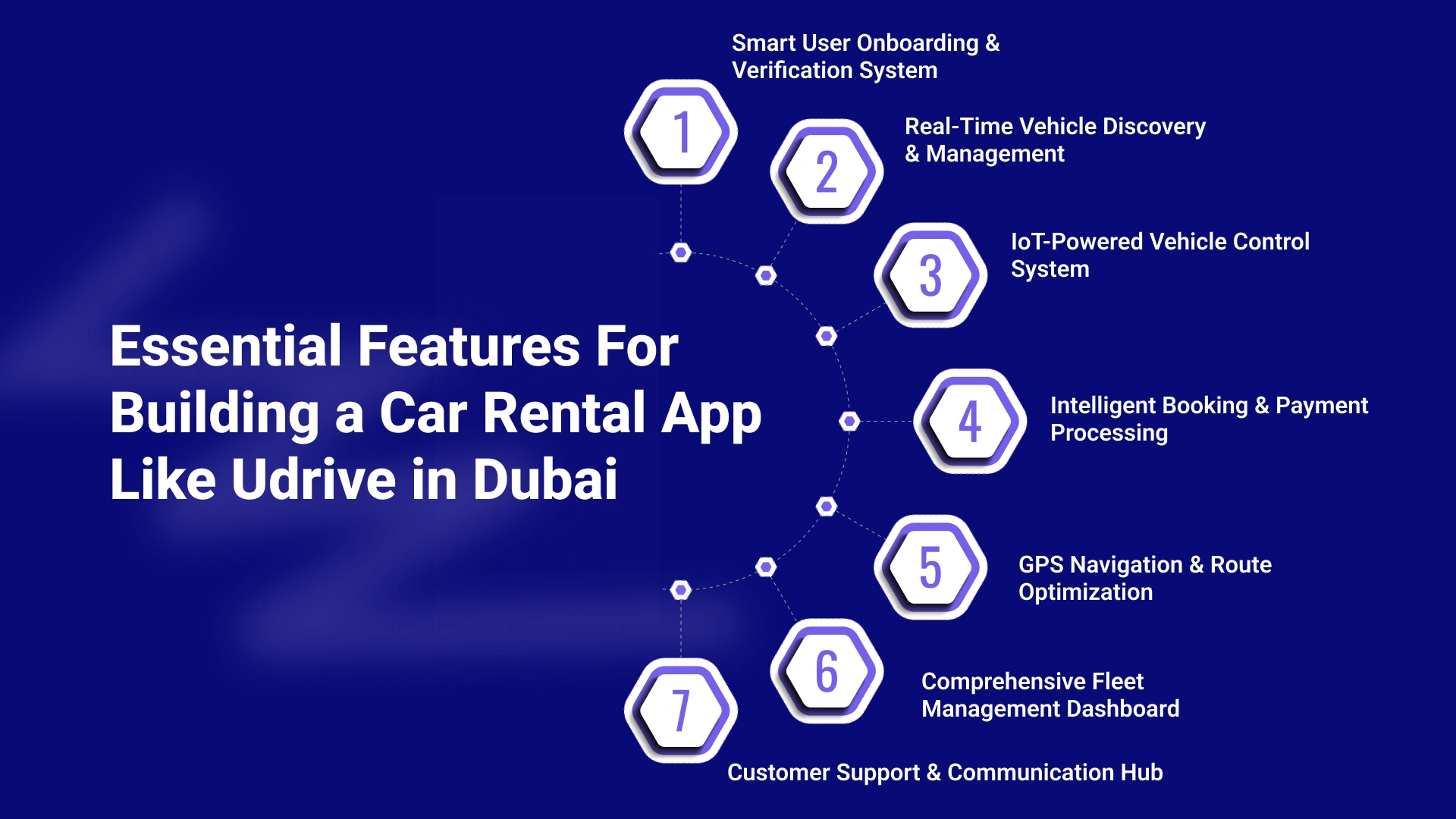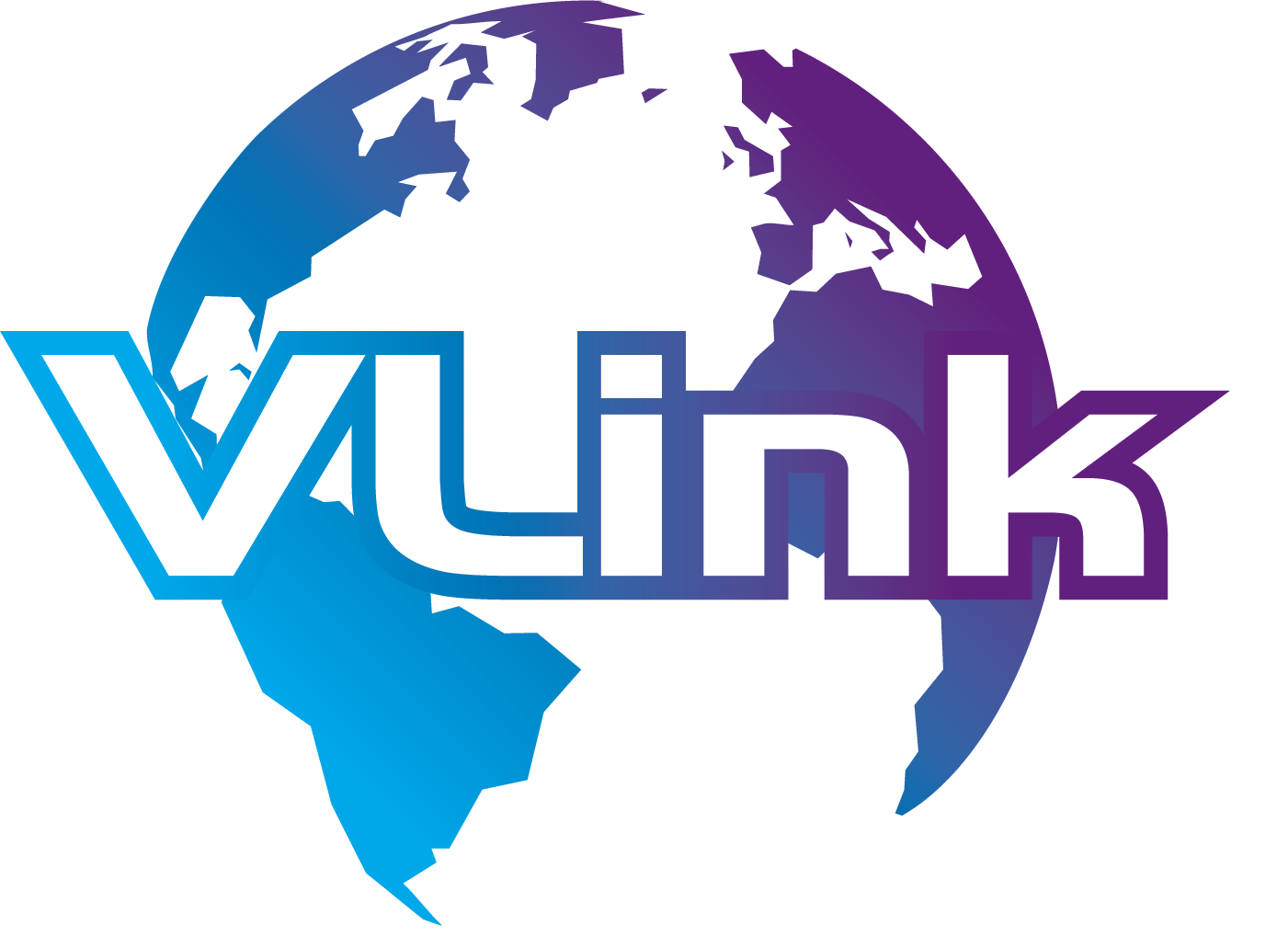Have you ever thought about the situation where you need a car for just a few hours while you stroll through Dubai? Here’s what you do: open the app, find the nearby cars, check on your phone, and just drive away instead of the hassle of conventional rental paperwork or any long-term promise. But, today, there are self-driving car platforms like Udrive that are changing the way urban travel exists and creates a thriving marketplace potential in the UAE.
When you're considering building your own car-sharing platform, you need to understand that the cost to develop a car rental app like Udrive goes far beyond creating an attractive interface. Investing in advanced IoT integrations, secure payment gateways, real-time GPS tracking systems, and making sure your platform conforms with UAE traffic laws are all part of the plan. It will be necessary to carefully plan the backend infrastructure for your development journey in order to manage user management, vehicle monitoring, and many simultaneous bookings in Dubai's dynamic market.
Your Udrive app development cost will fluctuate dramatically based on the features you choose to implement and the complexity of your desired platform. Depending on whether you choose a simple version or a fully-featured solution with sophisticated analytics, AI-powered recommendations, and extensive fleet management capabilities, your investment might range from AED 180,000 to AED 1,200,000. Whether you decide to use cross-platform solutions that can lower upfront expenses or native development for both iOS and Android can also affect your budget.
Throughout this detailed exploration of the cost to develop a car rental app like Udrive, you'll discover the essential technology components, must-have features, and market positioning strategies that will determine your success in Dubai's competitive car rental landscape.
Udrive App: Market Performance & Key Statistics
Since Hasib Khan founded Udrive in 2016, the firm has raised $17.3 million in six investment rounds and has over 380,000 app users in addition to powering over two million trips. The platform, which was the first pay-per-minute car rental concept in the United Arab Emirates, has spread to Saudi Arabia and raised the bar for self-drive car rental services.

The following major numbers illustrate Udrive's market effect and the possibilities for developing mobile apps for car rentals:
User Engagement & Growth:
- Active user base: 380,000+ registered users across the UAE and Saudi Arabia
- Ride Count: Since debut, more than 2 million rides have been conducted.
- Market presence: operating continuously for more than eight years in the cutthroat UAE market
- Geographical expansion: in 2022, the Saudi Arabian market was successfully reached.
Business Model Performance:
- Pricing structure: Basic automobile rentals start at about 1.10 AED per minute.
- Savings: Compared to conventional rental models, customers might save up to 40%.
- Diversification of revenue: Several revenue sources via business partnerships, monthly bundles, and per-minute rentals
- Use of the fleet: Asset efficiency is maximized by high vehicle rotation rates.
Technology & Innovation:
- IoT Integration: Remote unlocking and sophisticated car tracking
- Availability in real time: Real-time availability and location updates for cars
- Mobile-first strategy: smooth booking and payment process using an app
- Data analytics: User behavior insights driving business optimization
Funding & Valuation:
- Total funding raised: $17.3 million across 6 funding rounds
- Investor confidence: Strong backing from regional and international investors
- Market validation: Proven business model attracting continued investment
- Competitive landscape: 18 identified competitors in the regional market
Market Insights for Dubai's Car Rental Industry
One of the most vibrant and quickly expanding areas of the UAE economy is the rental vehicle market in Dubai, which is fueled by business travel, tourism, and shifting urban mobility preferences. Understanding these market dynamics is crucial for anyone considering the cost to develop a car rental app like Udrive.
Market Size & Growth Projections:

Market Segmentation & Preferences:
- In 2024, the largest segment was economy automobiles, which accounted for 32.21% of total revenue.
- Preference for self-drive: Growing interest in self-driving rental experiences
- Temporary rentals: Hourly and daily leases are becoming more popular than weekly commitments.
- Digital adoption: smartphone applications now account for over 85% of reservations.
Regulatory Environment:
- Regulations of the Dubai RTA: Strict safety and licensing standards for car-sharing services
- Compliance with insurance: Peer-to-peer renting requirements for comprehensive coverage
- Data security: GDPR-aligned privacy laws that impact how user data is handled
- Standards for vehicles: Rental fleets must undergo routine maintenance and inspections.
For entrepreneurs investigating the car rental app development cost and Udrive clone app cost scenarios, this flourishing market environment offers a wealth of prospects, especially for those who can spot underutilized markets or creative service delivery methods.
Essential Features For Building a Car Rental App Like Udrive in Dubai
Careful feature planning and a significant financial commitment are necessary to create a competitive mobile app development project for car rentals that matches Udrive's capabilities. Understanding the cost breakdown of developing an app like Udrive starts with identifying the core features that drive user engagement and operational efficiency.

Here's a comprehensive breakdown of must-have features and their associated development costs:
1. Smart User Onboarding & Verification System
Building trust in the rent a car Dubai market starts with robust user verification. When you're building your app for the UAE market, you'll need to set up robust identity verification that works for both locals and visitors. This means you'll be working with Emirates ID integration, driver's license validation, and credit score checks - essentially creating multiple verification layers. The system must manage passport verification and foreign driving permits for visitors while guaranteeing adherence to Dubai RTA regulations.
Real-time document authenticity checks, automated license verification via RTA databases, and risk assessment algorithms that determine customer creditworthiness for deposit-free rentals—a crucial differentiation in the cutthroat self-drive car rental Dubai market—are examples of advanced features.
Development Cost Range: $20,000 - $35,000
2. Real-Time Vehicle Discovery & Management
When you're building your Udrive business, you need to put fleet management and vehicle discovery at the heart of your strategy. You want your customers to instantly find and access nearby available cars through real-time location tracking and availability updates.
Your system should show you comprehensive vehicle details including fuel levels, how clean each car is, and current maintenance status. You'll want to give your users powerful filtering options so they can search by their preferred car types, budget ranges, fuel efficiency needs, and special features like child seats or GPS systems.
Before your customers commit to any booking, you need to provide them with transparent pricing estimates. Your platform should adjust rates dynamically based on where they are, how busy things get, and what time of day they're booking. All of these are essential to upholding the high standards of service that clients of UDrive Rent a Car Dubai anticipate.
Development Cost Range: $35,000 - $55,000
3. IoT-Powered Vehicle Control System
Modern car-sharing app development cost includes sophisticated IoT integration services, enabling users to unlock, start, and monitor vehicles remotely. Encrypted data transmission, secure connection protocols, and dependable hardware integration across many car types are all necessary for this system.
Multiple unlocking techniques, including smartphone Bluetooth, QR code scanning, and backup PIN entering for connectivity problems, must be supported by the platform. Fuel level monitoring, automatic trip tracking for precise billing, and remote engine start for pre-cooling in Dubai's environment are examples of advanced features.
Building user trust in the self-drive car rental Dubai market requires safety features including automatic accident detection with emergency service notification, location monitoring to avoid theft, and emergency stop capabilities.
Development Cost Range: $45,000 - $75,000
4. Intelligent Booking & Payment Processing
You need sophisticated scheduling systems to manage your advance reservations, recurring rental agreements, and instant rentals for seamless booking experiences. Your system must handle complex pricing structures, including hourly rates, daily packages, long-term subscription models, and per-minute fees to meet your diverse customer needs and maximize your revenue potential.
Multiple widely used payment methods in the UAE market, including digital wallets like Apple Pay and Samsung Pay, overseas payment methods, and local credit cards, must be supported by payment processing.
Split billing for corporate accounts, automated receipt creation, dispute resolution procedures, and integration with UAE VAT reporting regulations for company compliance are examples of advanced capabilities.
Development Cost Range: $25,000 - $40,000
5. GPS Navigation & Route Optimization
Integrated navigation systems that assist users in finding vehicles, navigating to destinations, and returning cars to authorized zones are a component of effective car rental software development. The system ought to offer location-based services pertinent to Dubai's distinct terrain, real-time traffic information, and the best possible routes.
Fuel station locators with real-time pricing, identification of approved parking zones, and interaction with Dubai's Salik toll system for automated payment processing are all necessary features. Additionally, the system should provide automatic toll fee billing and geofencing for vehicle usage limits.
Trip history analysis, carbon footprint tracking, and customized route recommendations based on user preferences and past behavior patterns are examples of advanced features.
Development Cost Range: $20,000 - $35,000
6. Comprehensive Fleet Management Dashboard
In order for administrators to track vehicle whereabouts, usage trends, repair plans, and financial performance in real time, backend systems need to include advanced fleet management features. Predictive maintenance alarms, cleaning status monitoring, and automated damage reporting are all included in this.
You need to ensure your dashboard accommodates your diverse team members, from fleet managers and maintenance staff to customer support agents and financial controllers, each with their appropriate access rights and reporting capabilities. As you leverage advanced data analytics, you'll gain valuable insights into how well your vehicles are being utilized, where you can optimize revenue, what patterns emerge in user behavior, and which market trends should guide your strategic decisions for long-term, sustainable growth.
Development Cost Range: $30,000 - $50,000
7. Customer Support & Communication Hub
Managing the intricate interactions that are a part of vehicle rental app development projects requires a dependable infrastructure for customer assistance. Multiple contact channels, such as voice help, in-app chat, emergency assistance, and extensive FAQ resources, must be offered by the system.
You'll receive real-time support throughout your rental experience, with clear escalation paths when you encounter significant issues, automated assistance for your routine questions, and emergency coordination with local authorities whenever necessary.
Your integrated customer management system enables personalized care tailored to your needs, tracks all your concerns from start to resolution, and keeps you proactively informed about your account status, exclusive offers, and important service updates that matter to you.
Development Cost Range: $15,000 - $25,000
How Much Does it Cost to Develop a Car Rental App Like Udrive: Detailed Breakdown
The complexity, features, and development methodology all affect how much it costs to create a car rental software like Udrive. Whether you're partnering with a mobile app development company in Dubai or exploring offshore development options, understanding the detailed cost structure helps you make informed budget decisions.
Here's a comprehensive car rental app development cost breakdown by development phases:
Cost Breakdown by Development Phase
| Phase | Key Activities | Hours | Cost (AED) |
| Research & Strategy | Market analysis, competitor research, feature prioritization, and Udrive business model analysis | 100-150 | 15,000-37,500 |
| UI/UX Design | Wireframing, user journey mapping, mobile interface design, branding | 150-250 | 22,500-62,500 |
| Frontend Development | iOS & Android app development using Flutter and React Native, cost for car rental apps considerations | 400-600 | 60,000-150,000 |
| Backend Development | API creation, database design, server architecture, IoT integration, payment systems | 500-800 | 75,000-200,000 |
| IoT Integration | Vehicle control systems, sensor integration, and remote unlock functionality | 120-200 | 18,000-50,000 |
| Third-party Integrations | Payment gateways, mapping services, identity verification, RTA compliance systems | 180-300 | 27,000-75,000 |
| Quality Assurance | Functional testing, security testing, IoT device testing, and performance optimization | 120-200 | 18,000-50,000 |
| Deployment & Launch | App store submission, server setup, launch preparation, initial marketing | 60-100 | 9,000-25,000 |
| TOTAL COST | 1,630-2,600 hours | AED: 244,500-650,000 |
Additional Operational Costs
These ongoing expenses ensure your car rental platform operates smoothly and scales effectively:
| Category | Specific Services | Cost (AED) |
| Cloud Infrastructure | AWS/Azure hosting, CDN, database management | 8,000-25,000/month |
| IoT & Hardware | Vehicle sensors, tracking devices, and unlock mechanisms | 1,500-3,000 per vehicle |
| Third-Party APIs | Maps, payments, identity verification, and communication services | 6,000-15,000/month |
| Marketing & User Acquisition | Digital advertising, app store optimization, and influencer partnerships | 15,000-50,000/month |
| Insurance & Legal | Comprehensive vehicle insurance, legal compliance, and data protection | 10,000-30,000/month |
| Maintenance & Support | Bug fixes, feature updates, customer support, and fleet management | 8,000-25,000/month |
| TOTAL MONTHLY | AED: 48,500-148,000 |
Total Estimated Investment for Car Rental App Development
| App Complexity | Estimated Cost (AED) | What You Get |
| MVP (Basic) | 180,000-350,000 | Core booking features, basic vehicle control, and simple payment integration |
| Standard App | 350,000-650,000 | Full Udrive app features, advanced IoT integration, comprehensive admin panel |
| Enterprise Solution | 650,000-1,200,000+ | AI-powered analytics, multi-city support, advanced fleet management, and custom integrations |
Understanding these cost to build a mobile app helps entrepreneurs plan realistic budgets for their car rental mobile app development projects while ensuring adequate resources for both initial development and ongoing operations.
Key Factors Affecting Car Rental App Development Cost
The factors affecting car rental app development cost extend far beyond basic coding requirements. Smart entrepreneurs must understand these variables to make informed decisions about their Udrive app development cost and optimize their development budget effectively.

1. Application Complexity & Feature Depth
The scope of the Udrive app features you choose to implement dramatically impacts your overall budget. A basic MVP might focus solely on vehicle booking and payment processing, while a comprehensive platform includes advanced analytics, AI-powered recommendations, and sophisticated fleet management capabilities.
Complex features like real-time vehicle diagnostics, predictive maintenance scheduling, and dynamic pricing algorithms require specialized expertise and extended development time. The cost breakdown of developing an app like Udrive increases significantly when incorporating machine learning for user behavior analysis, route optimization, and demand forecasting.
Integration complexity also affects costs. Connecting with multiple payment gateways, mapping services, and third-party APIs requires careful planning and extensive testing to ensure seamless functionality across all components.
2. Technology Stack Selection
Your choice of tech stack for building a car rental app significantly influences both development costs and long-term maintenance expenses. The Flutter vs React Native cost for car rental apps debate often centers on cross-platform efficiency versus native performance requirements.
Flutter development typically offers faster deployment across iOS and Android with shared codebase benefits, potentially reducing initial development costs by 20-30%. However, React Native provides better integration with existing systems and more extensive third-party library support for complex car rental software development requirements.
Backend technology choices impact scalability and operational costs. Cloud-native architectures using AWS or Azure provide flexibility but require ongoing operational expertise, while traditional server setups might offer lower initial costs but limited scalability for growing user bases.
3. IoT Integration Requirements
Modern self-driving car rental platforms require sophisticated IoT integration for vehicle control, monitoring, and user experience enhancement. The complexity of hardware integration significantly affects the Udrive clone app cost as it involves both software development and physical device integration.
Basic unlock/lock functionality might cost AED 30,000-50,000 to implement, while comprehensive vehicle monitoring, like engine diagnostics, fuel levels, and location tracking, can increase costs to AED 75,000-120,000. Advanced features like remote engine start, climate control, and emergency services integration add further complexity and expense.
Hardware costs per vehicle range from AED 1,500-3,000, while software integration and ongoing connectivity fees add AED 50-150 monthly per vehicle to operational costs.
4. Regulatory Compliance & Legal Requirements
UAE's regulatory environment adds specific requirements that impact car rental app development costs. Dubai RTA compliance, insurance integration, and data protection regulations require specialized legal and technical expertise.
Emirates ID integration, international driving license verification, and automatic violation handling systems require connections with government databases and specialized security implementations. These compliance features typically add AED 40,000-80,000 to development costs but are essential for legal operation.
Ongoing compliance monitoring, regular audits, and regulation updates require dedicated resources, typically consuming 10-15% of annual operational budgets for established platforms.
5. Development Team Location & Expertise
The factors affecting car rental app development cost heavily depend on your team selection strategy. Local car rental app developers in Dubai offer deep market understanding and regulatory expertise, but typically charge AED 200-400 per hour for specialized fintech development.
Offshore development teams might offer rates of AED 75-150 per hour, potentially reducing development costs by 40-60%. However, complex projects requiring IoT integration, regulatory compliance, and real-time systems often benefit from local expertise despite higher costs.
Hybrid approaches combining local project management and regulatory expertise with offshore development teams can optimize costs while maintaining quality and compliance standards.
Cost-Saving Strategies for Car Rental App Development
Reducing your Udrive app development cost without compromising quality requires strategic planning and smart technology choices. These proven strategies help optimize your budget for car rental app development while maintaining competitive functionality.

1. Strategic MVP Planning
The most effective way to minimize the cost to develop a car rental app like Udrive is to start with a focused minimum viable product (MVP) that captures core user needs without unnecessary complexity. Analyze Udrive's essential features and prioritize those that directly impact user acquisition and retention.
Focus your initial development on user registration, vehicle search, basic booking functionality, and simple payment processing. Advanced features like AI-powered recommendations, comprehensive analytics, and sophisticated fleet management can be added in subsequent phases based on actual user feedback and revenue generation.
This approach can reduce initial car rental app development cost by 40-50% while providing a viable product for market testing and early user acquisition.
2. Smart Technology Stack Decisions
Choosing the right tech stack for building a car rental app significantly impacts both development and operational costs. Cross-platform development using Flutter or React Native can reduce development time by 30-40% compared to native iOS and Android development.
Open-source technologies offer substantial savings on licensing fees while providing robust functionality. Consider using Node.js for backend development, PostgreSQL for database management, and Redis for caching—all offering enterprise-grade capabilities without licensing costs.
Cloud services like AWS or Google Cloud provide startup credits and scalable pricing models that grow with their user base, avoiding large upfront infrastructure investments.
3. Third-Party Integration Strategy
Rather than building complex systems from scratch, leverage existing services for payment processing, mapping, and communication features. Integration with established payment gateways like PayTabs or Network International costs AED 15,000-30,000 compared to AED 100,000+ for custom payment processing development.
Similarly, using Google Maps API or Mapbox for navigation features costs a fraction of developing proprietary mapping solutions while providing superior functionality and ongoing updates.
4. Outsourcing & Team Optimization
Consider hybrid development teams combining local expertise for regulatory compliance and user experience design with offshore development for routine coding tasks. This strategy can reduce overall development costs by 25-35% while maintaining quality standards.
Car rental app developers in Dubai provide essential local market knowledge and regulatory expertise, while offshore teams handle backend development, testing, and maintenance tasks at lower hourly rates.
5. Agile Development Methodology
Adopting agile development practices with regular sprints and continuous testing helps identify and resolve issues early, reducing costly late-stage changes. This approach also allows for iterative feature development and user feedback incorporation.
Regular testing and quality assurance throughout development prevent expensive bug fixes and security issues that could impact launch timelines and user trust.
[Also Read: Transform Your Development Strategy: Waterfall vs Agile – Which Method Fits Your Needs?]
Hidden Costs in Car Rental App Development
Beyond obvious development expenses, hidden costs in building an app like Udrive can significantly impact your project budget. Understanding these often-overlooked expenses helps create realistic financial projections and prevents budget overruns that derail promising projects.

1. Ongoing Operational Infrastructure
App maintenance cost for car rental apps extends far beyond initial development investment. Cloud hosting costs scale with user growth, potentially increasing from AED 5,000 monthly for startups to AED 25,000+ for established platforms handling thousands of daily bookings.
IoT connectivity and device management add substantial ongoing costs, with cellular data plans for vehicle tracking costing AED 50-150 per vehicle monthly. GPS tracking services, remote diagnostics, and real-time communication systems require continuous data transmission that compounds operational expenses.
Database management, backup systems, and disaster recovery infrastructure become increasingly expensive as your platform stores more user data, trip histories, and vehicle information over time.
2. Regulatory Compliance & Legal Framework
UAE's evolving regulatory landscape requires ongoing legal monitoring and compliance updates that represent significant hidden costs in building an app like Udrive. Annual compliance audits cost AED 20,000-50,000, while legal consultations for new feature development add AED 10,000-25,000 annually.
Data protection regulations require specialized security implementations and regular audits that cost AED 15,000-40,000 annually. Privacy policy updates, terms of service modifications, and regulatory reporting consume additional legal resources.
Insurance requirements for car-sharing platforms involve complex policies covering vehicle damage, user liability, and platform responsibility, often costing AED 2,000-5,000 per vehicle annually beyond standard automotive insurance.
3. Customer Acquisition & Market Competition
Competing with established platforms like Udrive requires substantial marketing investment that many entrepreneurs underestimate. Customer acquisition costs in Dubai's competitive market range from AED 25-75 per user, while retention campaigns require ongoing investment.
App store optimization, search engine marketing, social media advertising, and influencer partnerships consume AED 20,000-60,000 monthly for meaningful market penetration. Brand building and awareness campaigns require additional investment for competitive positioning.
4. Fleet Management & Vehicle Costs
Physical asset requirements represent major ongoing expenses, often overlooked in car rental app development cost breakdown calculations. Vehicle acquisition or leasing, maintenance, cleaning, and replacement costs compound as your fleet grows.
Specialized equipment installation, such as IoT devices, tracking systems, and unlock mechanisms, costs AED 1,500-3,000 per vehicle. Regular maintenance, insurance, registration, and depreciation add AED 1,000-2,500 monthly per vehicle to operational costs.
Vehicle damage, theft prevention, and security systems require additional investment, while cleaning and preparation services between rentals add operational complexity and expense.
5. Technology Evolution & Platform Updates
Rapid technology advancement requires continuous platform updates to maintain competitiveness and security. iOS and Android updates, payment gateway modifications, and third-party API changes necessitate regular development work.
Security patches, performance optimizations, and feature enhancements typically consume 15-25% of initial development costs annually. Failure to maintain current technology standards risks user abandonment and security vulnerabilities.
Integration updates with evolving government systems, payment processors, and mapping services require ongoing development resources that compound over time.
Tips to Build a Superior Car Rental App Than Udrive
Below are the key strategies to help you build a car rental app that not only matches Udrive but delivers a better user experience, broader use cases, and stronger business performance.
1. Offer Flexible Pricing Models Beyond Per-Minute Billing
While Udrive’s per-minute pricing model is convenient for quick city trips, it doesn’t always meet the needs of different user segments. Your app can stand out by introducing flexible pricing options such as hourly, daily, and weekend rental packages. Include subscription plans for frequent users and tailored packages for corporate clients. Offering loyalty discounts or off-peak pricing can also attract cost-conscious users. This flexibility improves user satisfaction, reduces churn, and makes your platform suitable for a wider variety of rental scenarios.
2. Implement AI for Predictive Maintenance and Dynamic Pricing
Artificial Intelligence development services can give your platform a major competitive edge. Use AI to forecast vehicle maintenance needs based on usage history, reducing downtime and preventing service disruptions. Implement dynamic pricing that adjusts rates based on demand, location, time of day, and vehicle availability. AI can also help you identify high-traffic areas where vehicles should be repositioned to maximise utilisation. This not only improves profitability but also enhances the user experience through better availability and pricing.
3. Support Multiple Use Cases: Tourism, Business, and Local Travel
Instead of focusing solely on urban commuters, cater to tourists, business travellers, and corporate clients. For tourists, include multilingual support, passport-based signups, in-app guides, and route recommendations to key landmarks. For businesses, build admin dashboards that support multiple employees under a single account, expense tracking, and automated invoicing. This diversification allows you to tap into more revenue streams and serve a broader market.
4. Segment Your Fleet by Tier for More Personalised Rentals
Go beyond a one-size-fits-all approach by dividing your fleet into different tiers. Offer budget vehicles for daily commuters, premium sedans for business travellers, and electric vehicles (EVs) for environmentally conscious users. You can also include niche vehicles like 4x4s for desert trips or convertibles for tourism hotspots. This gives users more choices and encourages upselling by offering better features for a slightly higher price.
5. Add a Digital Wallet with Cashback and Loyalty Rewards
Integrate a digital wallet system into your app that allows users to top up their balance and receive cashback on bookings. For example, offer 2–5% cashback that can be used for future trips. You can also partner with petrol stations, restaurants, or other businesses to offer app-based rewards and vouchers. This builds user loyalty, keeps more transactions within your app, and creates new B2B monetisation opportunities.
[Also Read: What is the Cost to Build a Digital Wallet Like Payit?]
6. Launch EV Zones and Promote Green Mobility
Position your platform as eco-conscious by offering exclusive EV-only rental zones in areas like Downtown Dubai or JLT. Incentivise EV usage through discounted rates, carbon offset badges, or in-app insights showing users their reduced carbon footprint. As Dubai moves towards sustainability, aligning your app with this trend can attract ESG-conscious users and even open doors to government partnerships or grants.
7. Integrate with Smart Parking and Petrol Stations
Integrate your app with smart parking solutions to help users find real-time parking availability and auto-end trips when parked in designated areas. You can also partner with petrol stations to show real-time fuel prices and allow users to redeem in-app credits for fuel. These integrations not only make the rental experience more convenient but also open up opportunities for partnership-based revenue.
8. Add Local Language Support and In-App Travel Assistance
Tourists form a large portion of Dubai’s car rental users. Support key languages like Arabic, Hindi, Urdu, and Russian to improve usability. Include local guides, restaurant suggestions, and real-time navigation to tourist destinations. You could also add a feature where users can book hotels, SIM cards, or airport transfers directly within your app. These services improve the travel experience and increase in-app engagement.
9. Enable Multi-User Accounts and Group Rentals
Many users travel with friends, family, or colleagues. Let them book under a single account and assign multiple drivers. You can also introduce group rental packages where the cost is split automatically among users. This is especially useful for tourists or business teams and creates a unique use case that Udrive does not currently support.
10. Upgrade Customer Support with Real-Time Assistance
Instead of traditional ticket-based systems, offer real-time customer service through in-app chat and callback features. Provide support during rental periods with direct escalation routes in emergencies. Having multi-channel support—chat, call, email—builds trust and confidence. Fast, helpful support can be a major differentiator, especially when users face issues during a live trip.
Revenue Model for a Car Rental App Like Udrive
Below is a structured list of revenue streams that go beyond standard bookings and help you monetize every user touchpoint on your car rental app.

1. Per-Minute, Hourly, and Daily Rentals
The primary source of revenue is time-based billing. Whether it’s per-minute, hourly, or daily usage, this model ensures consistent income from every ride. Diversifying pricing tiers makes it easier to monetise various usage patterns, from quick errands to full-day tourism.
2. Subscription and Membership Plans
You can generate recurring revenue by offering subscription packages for regular users. These can include fixed monthly rates with usage caps, discounted hourly rates, or access to premium vehicles. It also improves cash flow and user retention.
3. Corporate & Fleet Rentals
Offer corporate accounts for companies that need short-term or recurring employee travel. Provide company dashboards, usage tracking, and automated VAT-compliant invoicing. Fleet-based clients often bring predictable and high-volume revenue.
4. In-App Advertising and Brand Partnerships
Use your app interface to show sponsored listings, nearby fuel stations, insurance partners, or car servicing brands. Partner businesses can pay for premium placement or exclusive offers, giving you an additional revenue stream without affecting core functionality.
5. Commission from EV Charging Stations
As EVs become more popular, you can integrate with charging networks and earn a fee from every session booked through your app. This is particularly effective if you operate in EV-priority zones.
6. Cashback Burn via Wallet Partners
Your in-app wallet can double as an ecosystem. Partner with brands to offer cashback, which can only be redeemed with those partners (e.g., 10 AED cashback that must be used at a listed petrol station). This creates cross-promotional revenue and user engagement.
7. Anonymised Data Monetisation
Collecting anonymised data on user movement, vehicle usage, and popular routes allows you to sell urban mobility insights to infrastructure firms, local governments, or transport planning companies. Data monetisation should remain GDPR-compliant.
8. Tourism-Focused Upselling
Tourists can be upsold additional services like travel insurance, SIM cards, hotel bookings, or sightseeing passes. If integrated directly into your app, these services can provide affiliate commissions or markups.
9. Operational Fee Income
Charge late return fees, cleaning charges, or damage penalties when applicable. These not only recover costs but also incentivise responsible usage.
10. Peer-to-Peer Vehicle Listing (B2B2C Model)
Eventually, you can open the platform to private or business vehicle owners who can list their cars. You earn a commission from every booking. This lowers your asset costs while expanding your fleet.
Conclusion: Building a Car Rental App Like Udrive with VLink
Building a car rental app like Udrive in Dubai presents an exceptional opportunity to capitalize on the UAE's thriving mobility-as-a-service market, where smart city initiatives and tech-savvy consumers are driving unprecedented demand for flexible vehicle access solutions. The cost to develop a car rental app like Udrive varies considerably based on your feature complexity and market positioning, ranging from AED 200,000-400,000 for a feature-rich MVP to AED 600,000-900,000 for a comprehensive platform with advanced IoT integration, AI-powered fleet management, and seamless payment processing capabilities.
Understanding the complete investment landscape, including the frequently underestimated operational expenses that can increase your Udrive app development cost by 50-70% – is essential for sustainable growth. From vehicle telematics and insurance integrations to customer support systems and regulatory compliance, these ongoing costs can significantly impact your mobility startup's profitability if not strategically planned during the development phase.
Partnering with an experienced car rental app development agency like VLink ensures you're leveraging deep expertise in Dubai's transportation ecosystem, from RTA compliance requirements to local consumer behavior patterns. Our team combines technical excellence with market intelligence, understanding everything from Dubai's unique traffic patterns to the regulatory framework governing vehicle sharing services, positioning your app to compete effectively with established players like Udrive.
Contact us today to transform your car rental app vision into a market-leading reality!









 Shivisha Patel
Shivisha Patel

















